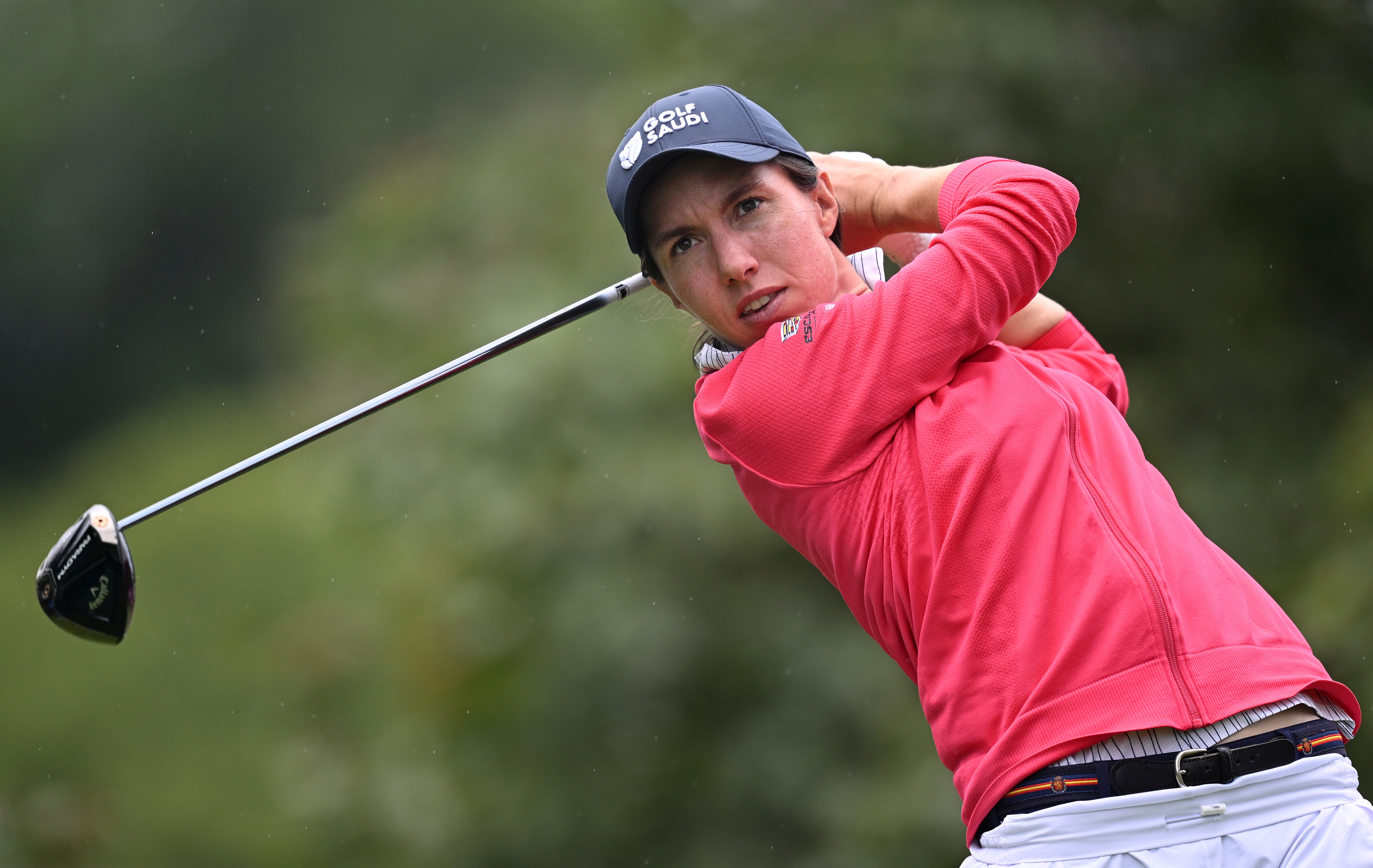Can Amateurs Be Penalised For Slow Play?
While penalties and sanctions are available on tour for slow play, what is the situation at club level for amateurs?


Slow play has long been a hot topic of conversation both on tour and at club level, with many column inches devoted to the causes and possible solutions.
On tour, penalties (and fines) can be imposed for breaches of tour slow play directives and policies, but for many observers, they are imposed too infrequently to make much difference. Richard Bland was penalised and fined during LIV Golf’s Chicago event in September 2024 for a breach of that tour’s pace-of-play policy, which states that “a player has 40 seconds to play each stroke, with an additional ten seconds if they are the first to play any stroke in the group”. In addition to a one-stroke penalty for a bad time, Bland was also fined $10,000 by LIV Golf.
And in last year’s Evian Championship, Carlota Ciganda refused to add a two-stroke penalty to her scorecard in the second round for a bad time under the LPGA Tour’s pace-of-play policy and was disqualified for signing for a score lower than that actually taken on the 9th (her final hole) under Rule 3.3b(3).

Carlota Ciganda was disqualified from the 2023 Evian Championship for refusing to accept a slow play penalty
But what about amateurs - can they be penalised for slow play?
Well, first it’s worth pointing out that ‘amateur’ is a very broad term, covering all levels of non-professional golf from The Amateur Championship right down to the monthly medal at the most humble of provincial golf clubs. The Amateur Championship and other top amateur events will have a pace-of-play policy, often closely aligned to the professional tours’ policies as can be seen here: https://assets.randa.org/c42c7bf4-dca7-00ea-4f2e-373223f80f76/3b886730-ff2d-4d37-94a2-1a6b222b596c/Pace%20of%20Play%20Policy.pdf
But at club level, it’s a different story, primarily because generally there is no-one there to police such things. The Rules regarding prompt pace of play are generally recommendations rather than set rules and are designed to allow flexibility to committees in charge of a competition to manage pace of play in an appropriate fashion, depending on the resources available. A great deal of guidance and suggestions are available within the Committee Procedures section 5H of the Official Guide to the Rules of Golf.

Slow play has been a hot topic of conversation on tour and at club level for many years
If you are going to class ‘unreasonably delaying play’ as slow play, either on a hole or between holes, then sanctions are available under Rule 5.6a of one stroke for a first breach, two for a second and disqualification for a third. But at club level, generally, who is going to be there to impose such penalties other than other players in the same group or groups close by? And that can end up being one person’s word against another’s, potentially leading to bad blood that club golf just doesn’t need.
Subscribe to the Golf Monthly newsletter to stay up to date with all the latest tour news, equipment news, reviews, head-to-heads and buyer’s guides from our team of experienced experts.
And what is ‘unreasonable’? Well, Clarification 5.6a/1 says:
Examples of actions that, if causing more than a brief delay in play, are likely to be treated as unreasonable delay are:
* Returning to the teeing area from the putting green to retrieve a lost club.
* Continuing to search for a lost ball for several minutes after the allowed three-minute search time has expired.
* Stopping by the clubhouse or halfway house to get food or drink for more than a few minutes if the Committee has not allowed for it.

Searching for a ball for several minutes after three minutes has elapsed would constitute unreasonably delaying play
Rule 5.6b, reproduced below, then addresses the need for a prompt pace of play, but this Rule doesn’t highlight specific penalties – these would need to come via an event’s ‘pace of play’ policy, typically built around the recommendations in Rule 5.6b…
Rule 5.6b
A round of golf is meant to be played at a prompt pace.
Each player should recognise that their pace of play is likely to affect how long it will take other players to play their rounds, including both those in the player’s own group and those in following groups.
Players are encouraged to allow faster groups to play through.
(1) Pace of play recommendations
The player should play at a prompt pace throughout the round, including the time taken to:
• Prepare for and make each stroke,
• Move from one place to another between strokes, and
• Move to the next teeing area after completing a hole.
A player should prepare in advance for the next stroke and be ready to play when it is their turn.
When it is the player’s turn to play:
• It is recommended that the player make the stroke in no more than 40 seconds after they are (or should be) able to play without interference or distraction, and
• The player should usually be able to play more quickly than that and is encouraged to do so.
(2) Playing out of turn to help pace of play
Depending on the form of play, there are times when players may play out of turn to help the pace of play:
• In match play, the players may agree that one of them will play out of turn to save time (see Rule 6.4a Exception).
• In stroke play, players may play “ready golf” in a safe and responsible way (see Rule 6.4b(2)).
(3) Committee pace of play policy
To encourage and enforce prompt play, the Committee should adopt a Local Rule setting a Pace of Play Policy.
This Policy may set a maximum time to complete a round, a hole or series of holes and a stroke, and it may set penalties for not following the Policy.
See Committee Procedures, Section 5G (recommendations on contents of Pace of Play Policy).

Jeremy Ellwood has worked in the golf industry since 1993 and for Golf Monthly since 2002 when he started out as equipment editor. He is now a freelance journalist writing mainly for Golf Monthly. He is an expert on the Rules of Golf having qualified through an R&A course to become a golf referee. He is a senior panelist for Golf Monthly's Top 100 UK & Ireland Course Rankings and has played all of the Top 100 plus 91 of the Next 100, making him well-qualified when it comes to assessing and comparing our premier golf courses. He has now played 1,000 golf courses worldwide in 35 countries, from the humblest of nine-holers in the Scottish Highlands to the very grandest of international golf resorts. He reached the 1,000 mark on his 60th birthday in October 2023 on Vale do Lobo's Ocean course. Put him on a links course anywhere and he will be blissfully content.
Jezz can be contacted via Twitter - @JezzEllwoodGolf
Jeremy is currently playing...
Driver: Ping G425 LST 10.5˚ (draw setting), Mitsubishi Tensei AV Orange 55 S shaft
3 wood: Srixon ZX, EvenFlow Riptide 6.0 S 50g shaft
Hybrid: Ping G425 17˚, Mitsubishi Tensei CK Pro Orange 80 S shaft
Irons 3- to 8-iron: Ping i525, True Temper Dynamic Gold 105 R300 shafts
Irons 9-iron and PW: Honma TWorld TW747Vx, Nippon NS Pro regular shaft
Wedges: Ping Glide 4.0 50˚ and 54˚, 12˚ bounce, True Temper Dynamic Gold 105 R300 shafts
Putter: Kramski HPP 325
Ball: Any premium ball I can find in a charity shop or similar (or out on the course!)